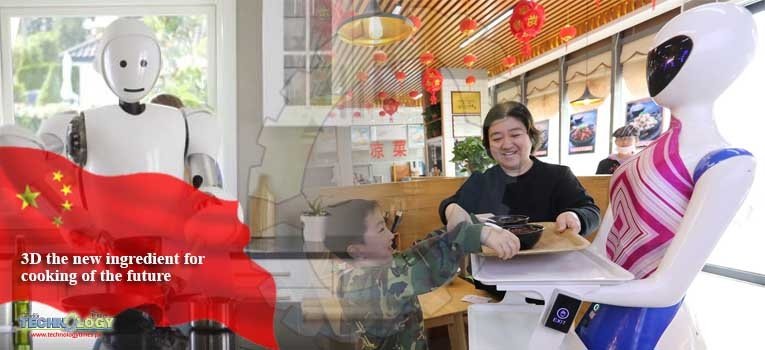Can machines prepare ingredients, cook them and make them as delicious as traditionally prepared food? Chinese companies are trying to make this possible and create a smarter food industry that meets future needs using 3D technology.
 Such intelligent dining ideas are drawing a large number of food lovers to an exhibition that opened on Sunday in Guangzhou, Guangdong province.
Such intelligent dining ideas are drawing a large number of food lovers to an exhibition that opened on Sunday in Guangzhou, Guangdong province.
“The new ideas can be seen as attempts to bring innovation to the dining business in China while retaining the traditional flavors of cuisines,” said a visitor surnamed Xu.
The 3D printing technology, mainly used in the industrial and medical fields, took on a new look at the event. “We create tailor-made noodles and moon cakes for astronauts using 3D technology, enabling them to have a better dining experience in space,” said Deng Mengyao from sauce producer Lee Kum Kee, which is taking part in the exhibition.
In 2018, the company and a Shenzhen-based research center cooperated to develop a 3D printer for food that can be carried in spaceships.
“The machine can help save space for storing food and enable astronauts to print out different delicacies according to their preferences,” Deng said.
Tailor-made food services are gaining popularity in China as people are paying more attention to healthy diets, and manufacturers are eyeing the growing demand as they develop new products.
“Before you open the fridge, a body fat scale will give you a review and then a tailor-made recipe will be displayed on the fridge’s screen according to your physical condition,” said Tang Xuanhu with Haier, a leading household electric company based in Qingdao.
Tang said the machine can also offer cooking advice to users by recognizing the electronic codes printed on the packages of food.
“In the future, robot arms may replace human hands in the kitchen, from cutting vegetables and cooking to washing dishes,” said Wu Zhaohui with the Chinese Academy of Sciences. “Technology such as artificial intelligence and the internet of things will bring fundamental changes to how a kitchen works.”
Nowadays in China, fast delivery services, cold-chain transport and drone delivery are becoming inevitable parts of urban life, said Wu.
According to the National Bureau of Statistics, China’s food and beverage revenue exceeded 4 trillion yuan ($578 billion) for the first time in 2018, with the takeout business surpassing 240 billion yuan and reaching 358 million users.
The expanding market has prompted the industry to go digital, said Wang Lei, president of Alibaba. “However, the industry is still in the early stages, so continued investment is needed to support the market.”
“The digital upgrade of restaurants will allow 1,000 diners to have 1,000 recipes,” Wang said. “Customers and restaurants are increasingly dependent on big data and other technology-led services.
“The smarter dining business in China will also inspire global players,” said Wang.